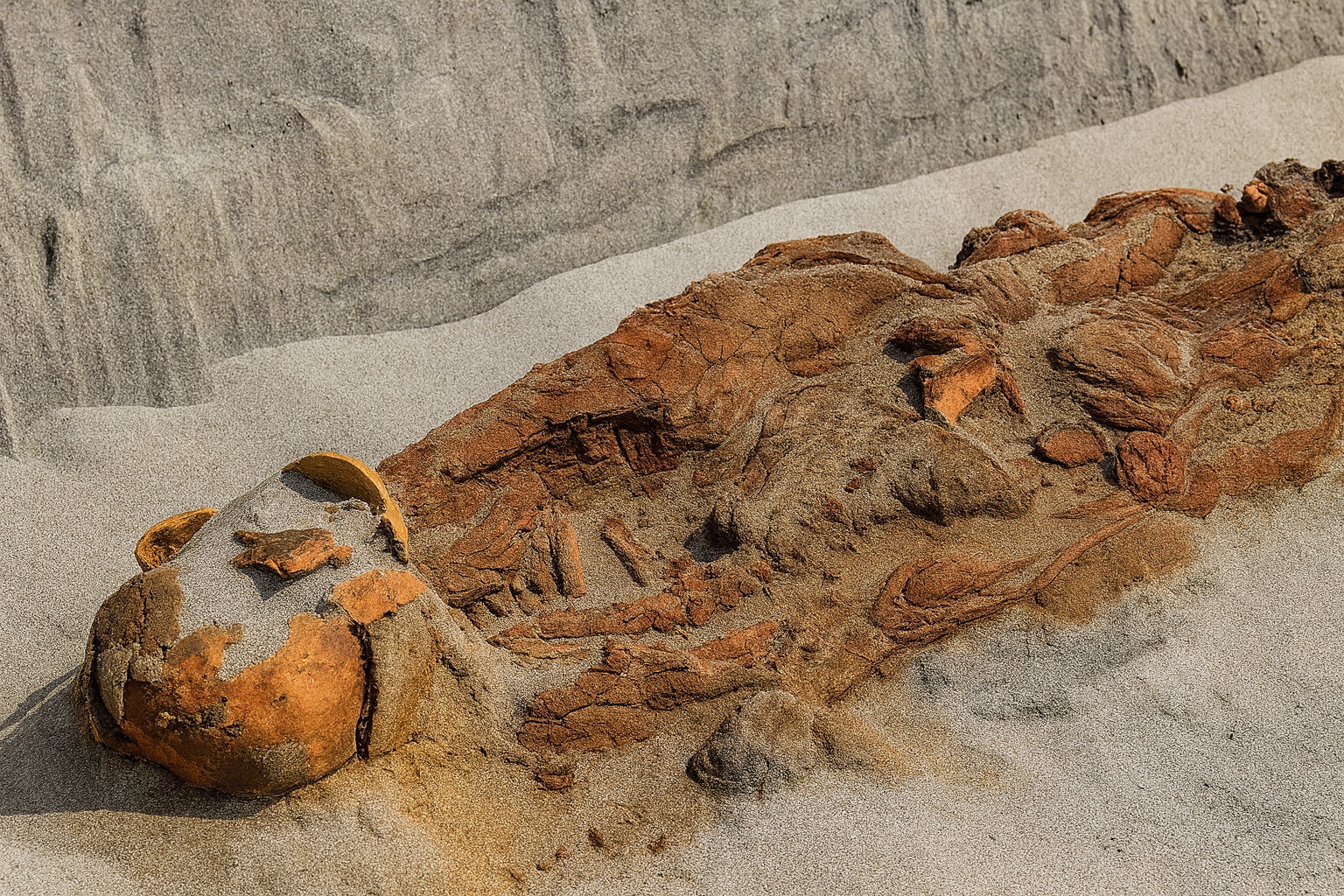Excavations near the Temple of Puémape, an archaeological complex in the San Pedro Lloc district in Peru, have unearthed traces of human sacrifice following the discovery of a ritual tomb.
At least 12 individuals have been identified within the tomb structure, which experts suggest were killed in a ritual sacrifice approximately 2,300 years ago.
Henry Tantaleán, professor of archaeology at the National University of San Marcos, said:
“The bodies were placed face down, with ropes around their necks, and hands tied behind their backs – a burial pattern unusual throughout Andean prehistory.” A skeletal analysis has also revealed cranial fractures and other perimortem trauma.
Notably, the burials lack accompanying grave goods or offerings, a deviation from prevailing mortuary traditions of the period.
Although the Temple of Puémape was originally constructed by the Salinar culture nearly 3,000 years ago, radiocarbon analysis indicates that these interments occurred between 400 and 200 BC, suggesting the temple was no longer in active use.
Nevertheless, the site appears to have retained ritual significance as a huaca—a sacred locus for ancestral veneration and ceremonial activity.
The biological and cultural identities of the deceased remain undetermined. Current research, including DNA sequencing and osteological study, seeks to establish whether the individuals were drawn from local populations or neighboring valleys.
Associated finds, including ceramic fragments, faunal remains, and botanical evidence, are under examination to reconstruct the broader ritual and social context of the interments.
“This discovery contributes critical new data to the study of Andean ritual practice, providing one of the clearest archaeological cases of large-scale sacrificial activity in pre-Columbian Peru,” said a representative from the National University of San Marcos.
Header Image Credit : National University of San Marcos
Sources : National University of San Marcos





